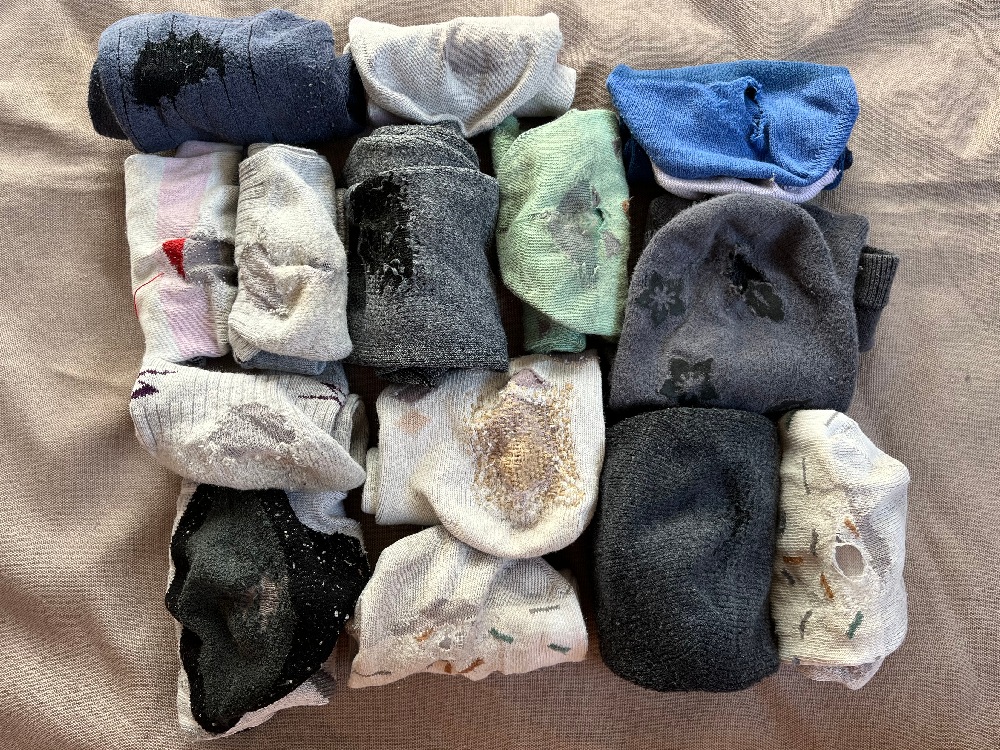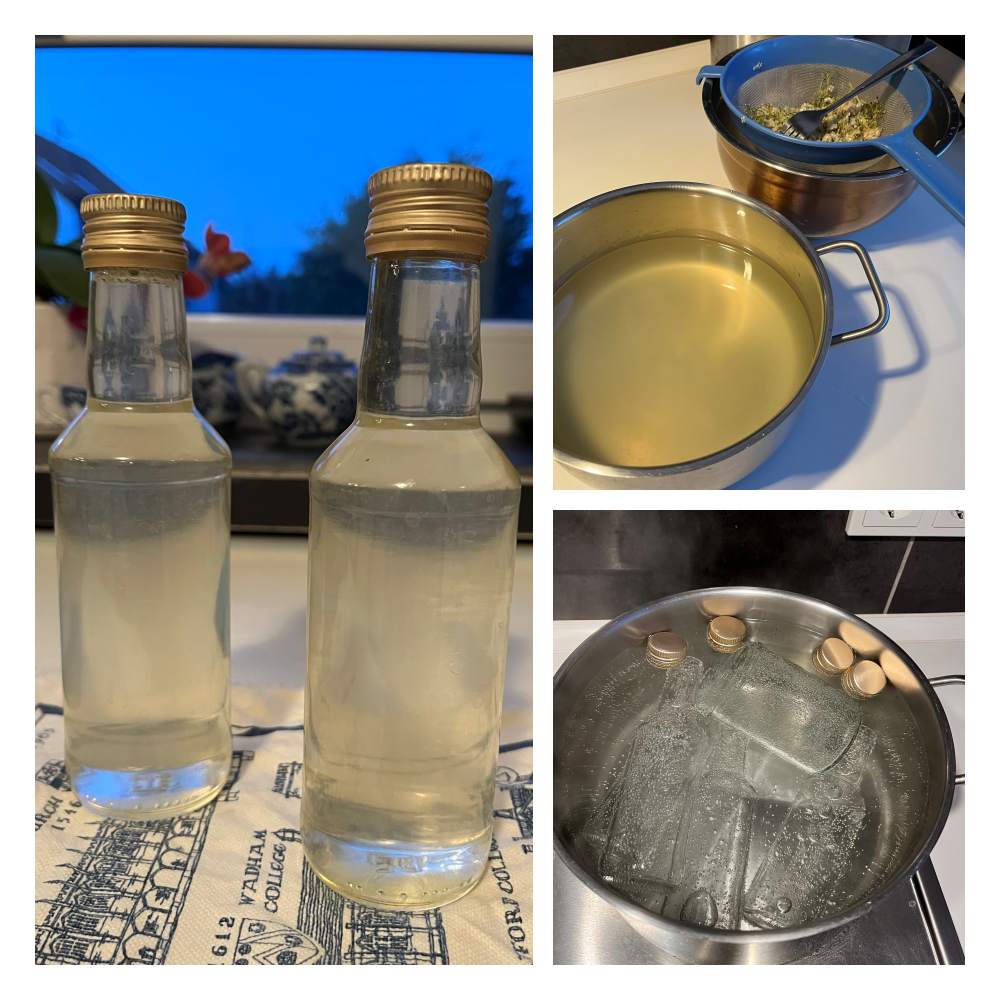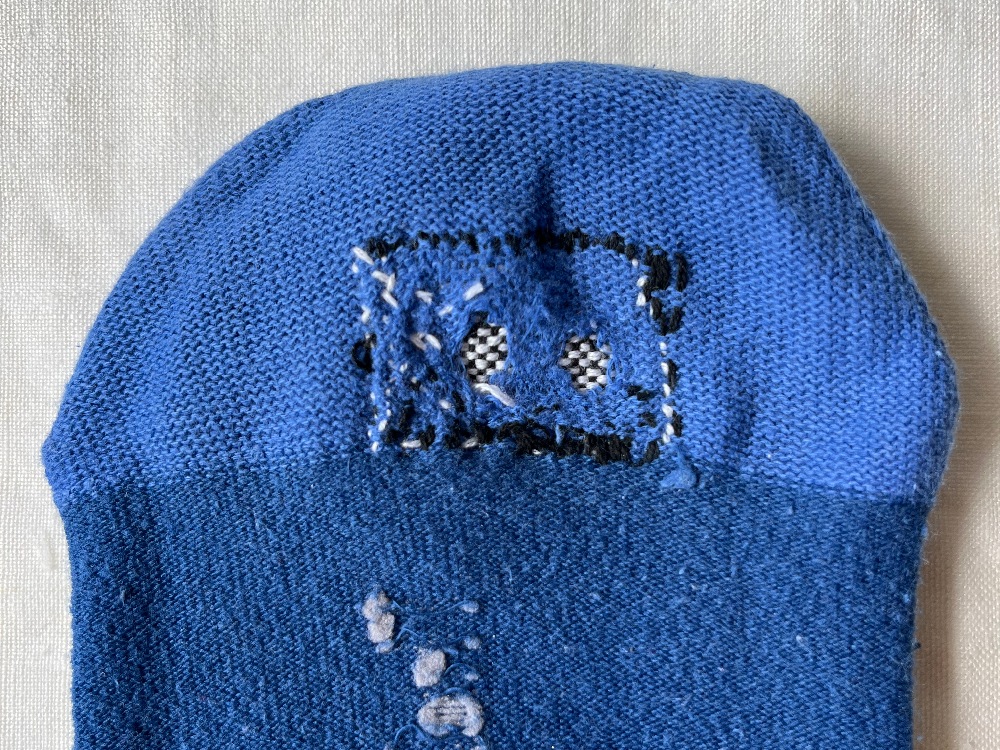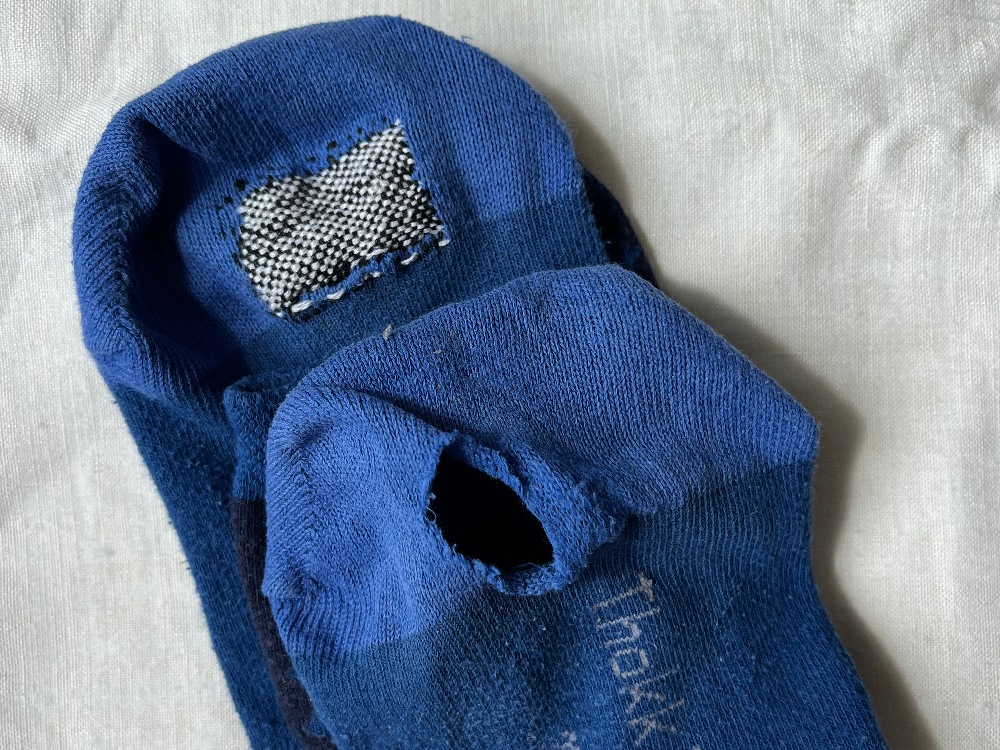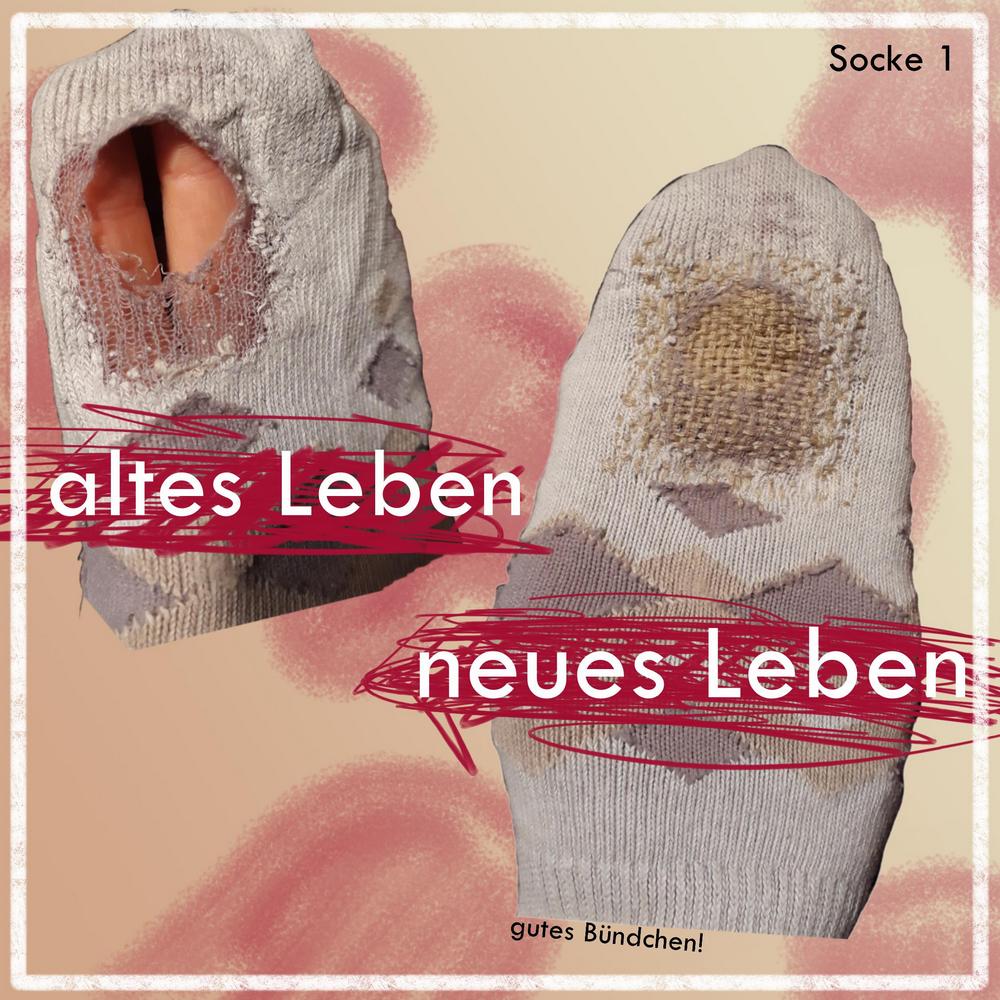Why do darning – a throw back
I continue with my very loose series called „My darning life“ (working title). I started with the post Darning, (my) a starting point. Today it’s some background stuff and a throw back.
A timeline: How did it start?
In fact, I wrote about the reasons in previous posts, long before I knew I was going to write this series. The first post on the blog about darning was About the sock siblings and darning and kind of prosaic (…at least I tried). It starts with beloved socks of mine having a hole at the heel and me being sad. From here on I quote from the post (english translation):
One day, the owner [me] was in a sewing café and heard for the first time about an activity called „stopfen" (eng: darning). They said it was a way to close holes. But not by pulling the edges together and sewing them. No – new fabric will be created at the spot where once there was a hole. The owner was confused and could not imagine such an activity. Creating new fabric where there is nothing?
How the story continued is no longer known. What is known is that the owner followed an Instagram account that focused on repairing and preserving garments and that’s how she learned about the word „mending“. The possibilities fascinated her.
And at some point, the sock pair owner understood: the technique she saw on the Instagram account was called "stopfen" in German.
But:
- How does the technique of darning work at all?
- What materials do I need?
- Who can explain me how to darn?

While there are plenty video tutorials for other handicrafts like knitting or crocheting, it was not so easy for darning. I hardly found any video tutorials at that time (who knows what keywords I used to search; I probably only used the German keyword which was not so fruitful) and if I did, they were not satisfactory. Not much showed up in my trusted search engine either. In the end I found books on the subject and then ordered one: Modern Mending by Erin Lewis-Fitzgerald [1]. Even though I mainly just flipped through it since then and don’t work with it that much (because I only use two techniques anyway), it was an anchor for me. Being led by someone who has been working on the subject for a long time and has a clue.
With this little smorgasbord of information, I darned the first socks. And then I continued. When I’m darning, I get into a really strong pull and want to move forward. I’ve never experienced that with any other handicraft. In contrast, sometimes several months lie between two darning pieces.
Fascination about this fiddly work?
And now please answer the question: What does fascinate me so much about this fiddly work (which it is)??
This question is answered by the following quote from my other blogpost Back! with a repaired piece of work
Repairing culture is something I’m really fascinated by, in every way and I also think that repairing is healing. Not only for the piece to be repaired but also for myself. It’s like this feeling when you create something with your own hands and feet.
But on top, there’s this feeling of taking away the pain because you cared about the spot that has hurt.
And that is how the topic self-efficacy comes into play again. Often, it’s not even beloved clothes of mine that get darned/repaired. It’s honestly this fact of being able to repair something and make it usable again that makes me feel great. To learn a skill and then actually use it. The most impressive thing is to vizualise this skill by taking before/after photos. This is also tip 3 from the book mentioned above. The issue of sustainability also plays a role because I don’t think it would be okay for me to dispose a garment because of a hole without having tried to find a solution. And these two points lead more or less to the reason why I’m blogging about this - not only for me but also for you: sharing is caring. Sharing of: Feeling of self-efficacy; and also the knowledge to repair broken clothes.
And what happened next?
Thanks to Instagram’s algorithm, it was enough to find one account on that topic. After that, a whole world opened up to me like magic and many posts and corresponding accounts showed up. Other media forms also discuss this topic but not nearly as well as Instagram does as a photo platform in my opinion; in this respect, Instagram is currently my favourite medium on this topic.
Finally (I won’t end the post without) two Instagram accounts as a recommendation to start with:
- Marlen from @milli_and_the_bee and here’s her website (she posts in english as well).
- Ekaterina from @ekaterinahaak, and here's her website (she posts in english as well).
If you’re interested in more content, just click yourself through their Instagram 🙂
And the book I mentioned:
[1] „Modern Mending“ by Erin Lewis-Fitgerald, available in Australian and UK/US editions.

